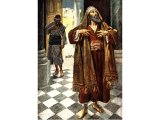This was originally planned to be my main blog but it is too painful by half to maintain the way I once intended. Just to hear the news brings pain. But it is the most important one in intent so must get back to it somehow.
Meanwhile, do have a look at Robert Fisk’s latest. And keep in touch with http://informationclearinghouse.info
We did what we could in the streets back in 2002 and 2003/4 to stop all this shit but I can’t believe our warnings of what would be the consequences of US invasions of Afghanistan and Iraq were so underestimated. Well, we got it pretty right with Afghanistan (we warned women would not be better off, that the drug trade and warlords would return, and that we’d have to settle in for a long long very long war just like the Russians and the Brits before us) — but who could have foreseen that Iraq would descend to worse than a war for liberation (or civil war if that’s what you were predicting). Trust old Negraponte from his days as ambassador to Honduras to be given just a few months in Baghdad to see the same rival killings in his wake, only on a worse scale. — How encouraging to see Shias and Sunnis come together on the 4th anniversary of the American invasion to demand the liberation of their country! How “surprise surprise” to see not a hint in Washington that it even was the 4th anniversary of the “liberation” (Russian and Nazi style) of Iraq.
Like this:
Like Loading...



